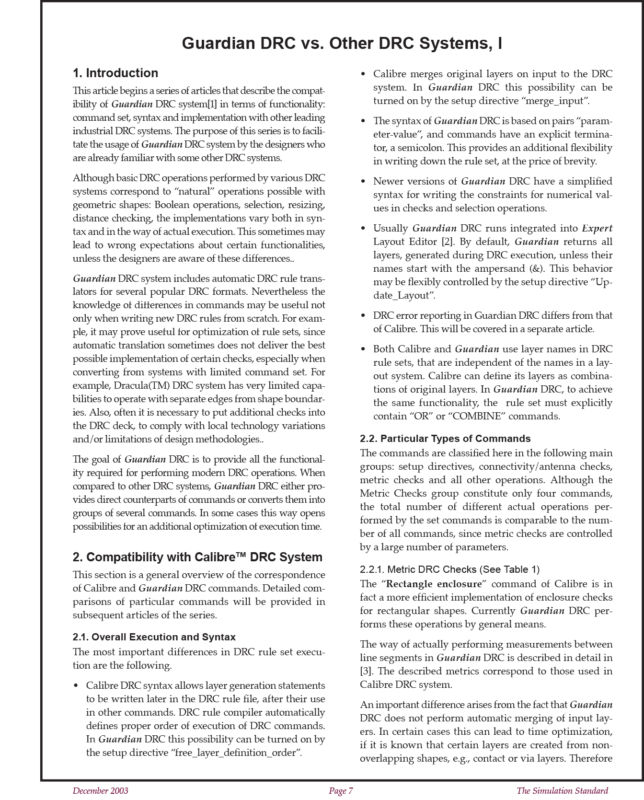Guardian DRC vs. Other DRC Systems, I
1. Introduction
This article begins a series of articles that describe the compatibility of Guardian DRC system[1] in terms of functionality: command set, syntax and implementation with other leading industrial DRC systems. The purpose of this series is to facilitate the usage of Guardian DRC system by the designers who are already familiar with some other DRC systems.
Although basic DRC operations performed by various DRC systems correspond to “natural” operations possible with geometric shapes: Boolean operations, selection, resizing, distance checking, the implementations vary both in syntax and in the way of actual execution. This sometimes may lead to wrong expectations about certain functionalities, unless the designers are aware of these differences..
Guardian DRC system includes automatic DRC rule translators for several popular DRC formats. Nevertheless the knowledge of differences in commands may be useful not only when writing new DRC rules from scratch. For example, it may prove useful for optimization of rule sets, since automatic translation sometimes does not deliver the best possible implementation of certain checks, especially when converting from systems with limited command set. For example, Dracula(TM) DRC system has very limited capabilities to operate with separate edges from shape boundaries. Also, often it is necessary to put additional checks into the DRC deck, to comply with local technology variations and/or limitations of design methodologies..
The goal of Guardian DRC is to provide all the functionality required for performing modern DRC operations. When compared to other DRC systems, Guardian DRC either provides direct counterparts of commands or converts them into groups of several commands. In some cases this way opens possibilities for an additional optimization of execution time.



